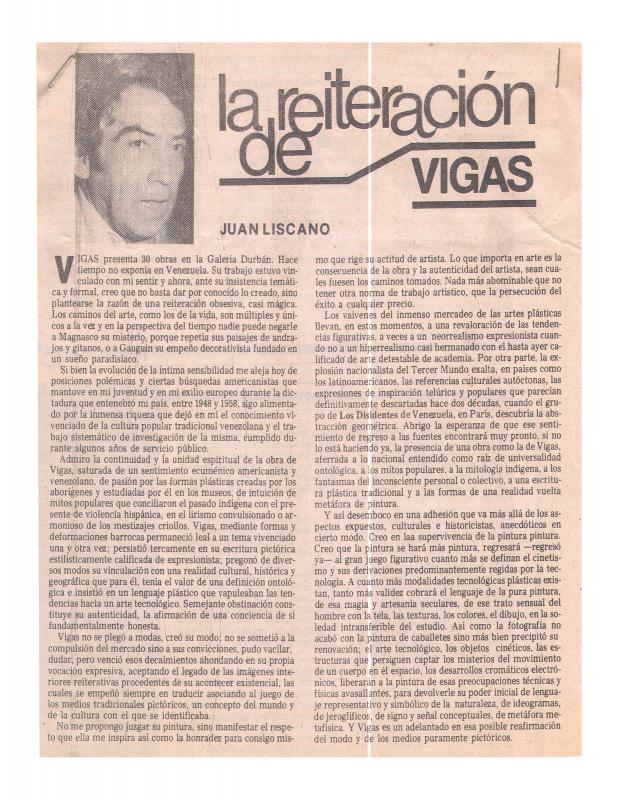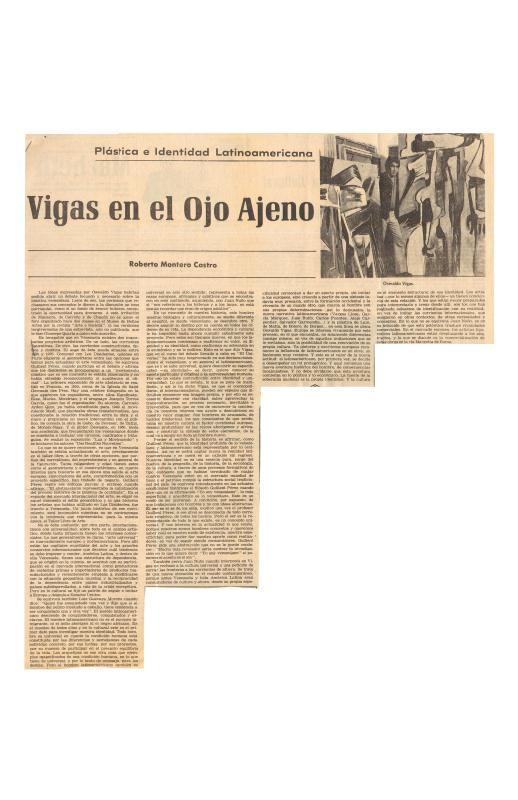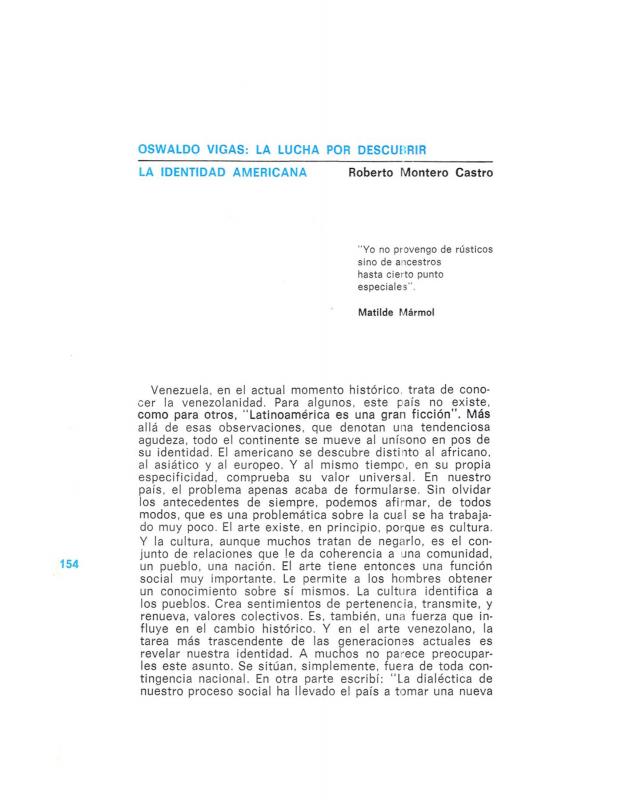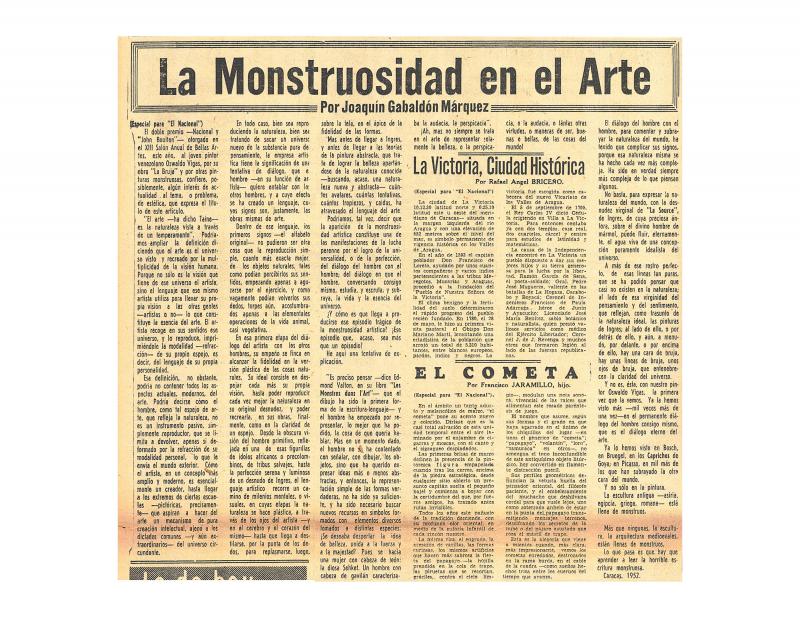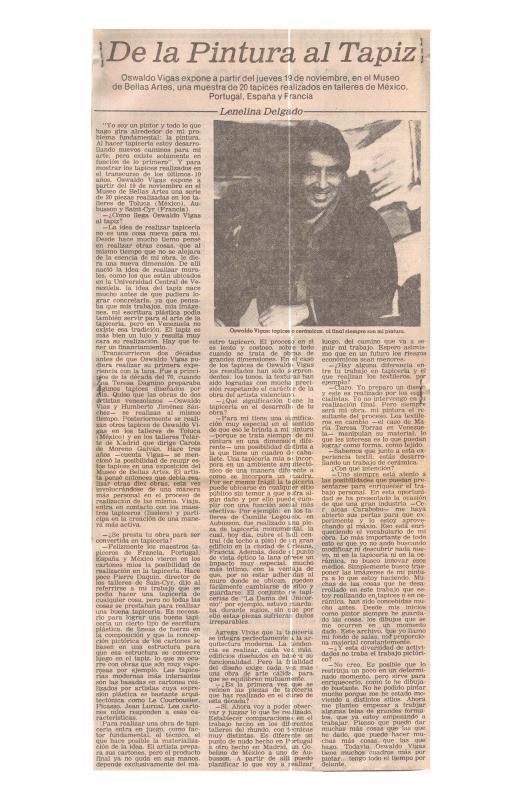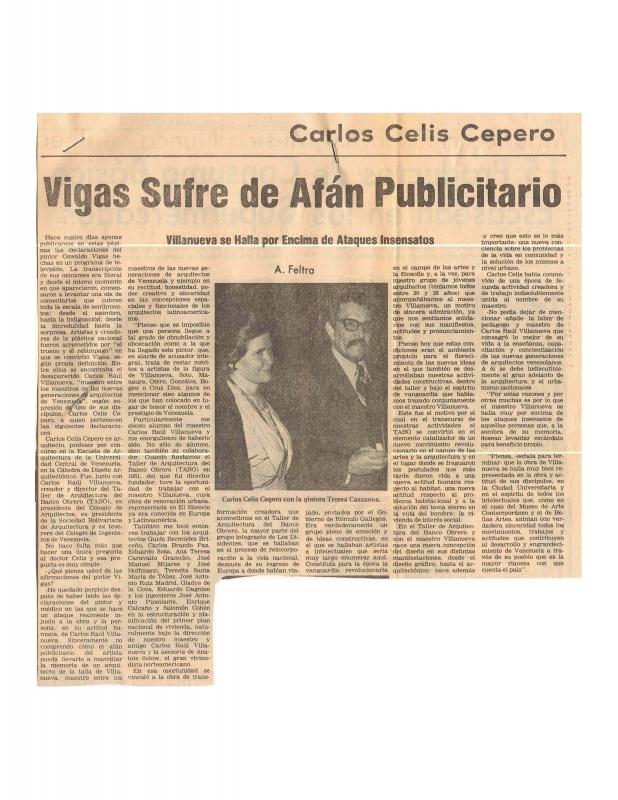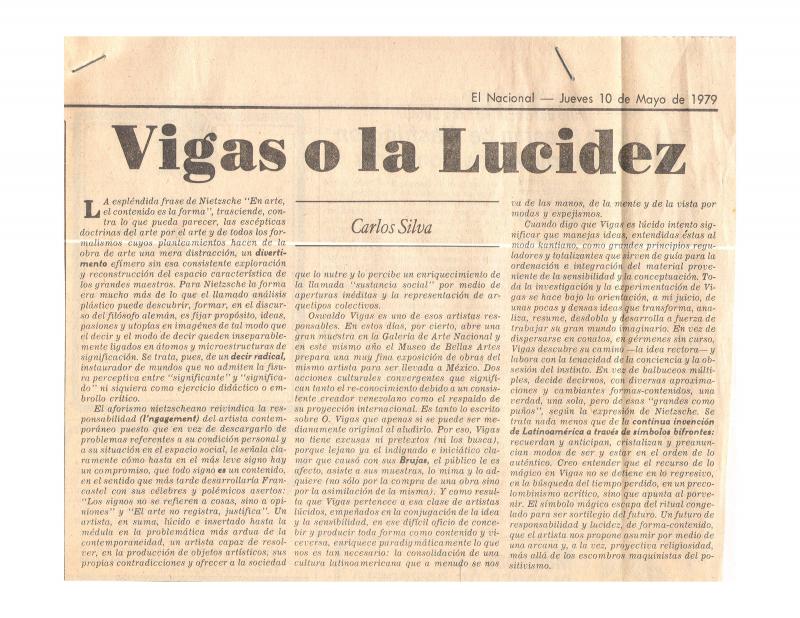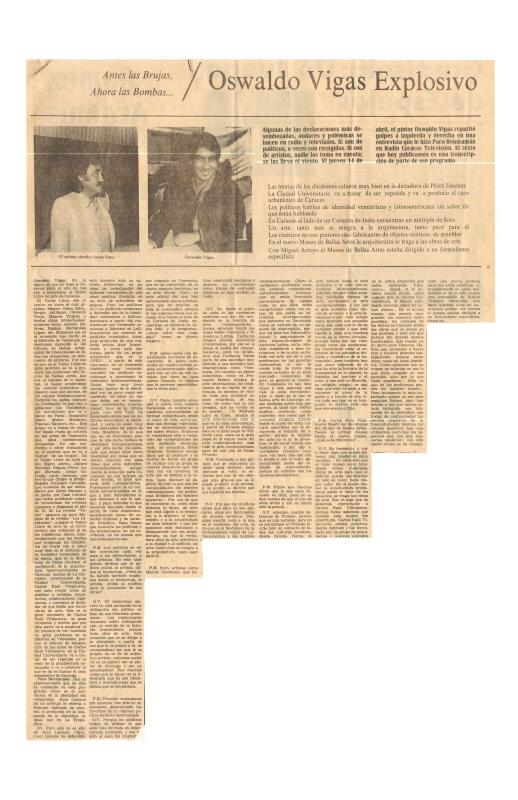The painter Oswaldo Vigas (b. 1926) published this essay a month after a polemical interview was broadcast on Radio Caracas Televisión and published by El Universal. Spurred by the radical statements in the Vigas interview, the debate in national artistic circles was regarding the group Los Disidentes (established in Paris 1950), the foreign influence displayed by local visual artists, the architecture of Carlos Raúl Villanueva, as well as his opinions on abstract and Kinetic art. In the present text, Vigas offers a historical appraisal supporting his position on Venezuelan mestizo identity as well as the need for it to be reflected in artistic endeavors. The artist points to certain trends and to specific interventions that art groups undertook throughout the twentieth century, not only in Venezuela, but also in the rest of the continent, that rescued vernacular values. With the development of these historical antecedents, he defends a native vernacular art confronting imported aesthetic values and therefore questions the validity of [Eurocentric] contributions by the group Los Disidentes. Vigas’ position mirrors the mestizo art argument popularized in the historiography of Latin American art during the 1970s, particularly with respect to art produced during the colonial period. Vigas’ historical reconstruction of the mestizo character of Venezuelan art transfers ethnicity [and cultural specificity] to more dynamic visual arts languages while at the same time emphasizes the peculiarity or essential characteristics that displace possible exchanges between culture and tradition. Through a persistent disagreement with the politics of display at the Museo de Bellas Artes, Vigas recognizes that the aesthetic ideas that he defends in this text did not have a place within the institutional framework of Venezuelan art.
[Regarding Vigas’ work, consult the following ICAA digital archives: the text by Juan Liscano, “La reiteración de Vigas” (doc. no. 1152769); the writings of Roberto Montero Castro, “Vigas en el ojo ajeno-Plástica e identidad latinoamericana” (doc. no. 1153266) and “Oswaldo Vigas: La lucha por descubrir la identidad americana” (doc. no. 1168108). See also the text by Joaquín Gabaldón, “La monstruosidad en el arte” (doc. no. 850831); the article by Lenelina Delgado, “De la pintura al tapiz” (doc. no. 1153365); as well as the following articles: “Vigas sufre de afán publicitario” (doc. no. 1155580) by A. Feltra, and “Vigas o la lucidez” (doc. no. 1153397) by Carlos Silva, in addition to the interview, “Oswaldo Vigas explosivo: Antes las brujas, ahora las bombas,” by Paco Benmaman (doc. no. 1153245)].

